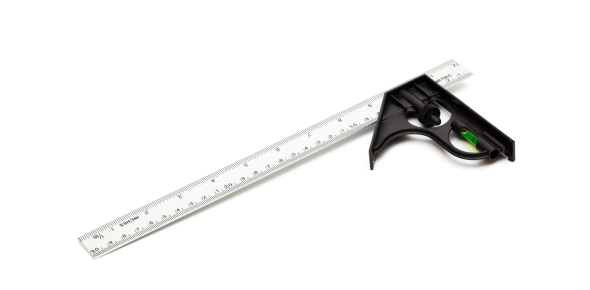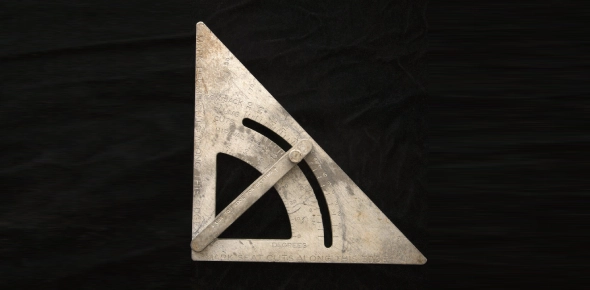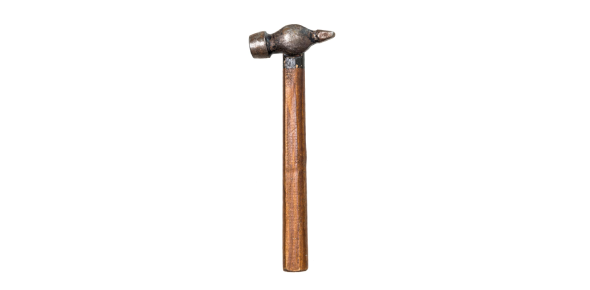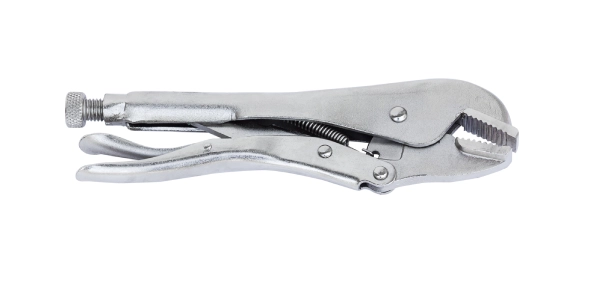Hands Tool Identification Quiz
(117).jpg)
Do you think you can recognize common and specialized tools by sight? Test your abilities with our Hands Tool Identification Quiz. This quiz is designed for those who want to either confirm their knowledge of tools or learn more about them. It covers a range of everyday tools, from basic hammers to more complex power tools, providing a comprehensive challenge for everyone from home DIYers to professional tradespeople.
Each question in the quiz presents a clear image of a tool and asks you to identify its name and use. This is not only about testing recognition but also about enhancing Read moreyour understanding of each tool's purpose and application. Completing this quiz will equip you with the practical knowledge needed to handle various tools effectively.
Hands Tool Identification Questions and Answers
- 1.Explanation
The tool in the image is a wood chisel, a hand tool designed for carving or cutting wood. A wood chisel typically features a sharp metal blade on one end and a handle made from wood or plastic on the other end to provide a secure grip. The metal blade is beveled at a specific angle to allow for precise cutting and shaping of wood. Wood chisels are used in various woodworking tasks such as carving intricate designs, smoothing rough surfaces, or cutting mortises and joints. Their usage requires skill to control the force and angle of the blade to achieve the desired shape or finish on the wood. Wood chisels are essential tools for carpenters, joiners, and hobbyists who work with wood.Rate this question:
- 2.Explanation
The tool in the image is a combination square, a multifunctional tool used primarily in carpentry, metalworking, and construction to measure and mark the material being worked on. It features a metal ruler and interchangeable heads for different measuring tasks, such as a 90-degree head for checking right angles and a 45-degree head for miter cuts. The square also typically includes a spirit level for checking level and plumb. With precise markings on the ruler, the combination square ensures accuracy in measuring lengths, angles, and depths, making it invaluable for creating perfect joins and ensuring that constructions are correctly aligned and balanced.Rate this question:
- 3.Explanation
The tool in the image is a speed square, a triangular-shaped measuring instrument made from plastic or metal. It combines the functions of a try square, miter square, protractor, line scriber, and saw guide in one compact tool. Typically used in carpentry, the speed square is invaluable for making quick, precise marks for cuts on dimensional lumber. The flat base allows it to sit steady on lumber, while the lipped edge can hook onto the material for consistent measurements. Its various scales enable carpenters to measure and mark angles for roof rafters, cross cuts, and other construction-related tasks efficiently. This tool is favored for its durability, ease of use, and versatility in various building projects.Rate this question:
- 4.Explanation
The tool in the image is a nail punch, also known as a nail set, which is a small, handheld metal tool used primarily in woodworking and carpentry. A nail punch has a pointed tip on one end and a blunt, flat head on the other that is struck with a hammer. It is designed to drive the head of a nail flush with, or slightly below, the surface of the wood without damaging the surrounding area. This allows for a smoother finish and prepares the surface for painting or varnishing. Nail punches come in various sizes to accommodate different nail heads, making them essential for detailed finish work where the appearance of the wood is paramount.Rate this question:
- 5.Explanation
The tool in the image is a sliding T-bevel, also known as an adjustable bevel or bevel gauge. It consists of a handle, usually made from wood or plastic, attached to a metal blade that can pivot and lock at any angle. This tool is primarily used in carpentry, woodworking, and metalworking to transfer or measure angles from one piece to another or to duplicate an angle that already exists on a workpiece. The adjustable blade allows the user to set and maintain a specific angle, which can then be traced onto the material or used as a guide for cutting. The sliding T-bevel is invaluable for ensuring accuracy and consistency in creating custom angles, making it a staple tool for professional and hobbyist builders alike.Rate this question:
- 6.Explanation
The tool in the image is a hammer, one of the most common and versatile hand tools used in various crafts and construction projects. A typical hammer consists of a sturdy handle and a heavy head, usually made from metal. The head often has two sides: one flat face for driving nails into wood or other materials, and a claw on the opposite side for pulling nails out. Hammers are essential for a wide range of tasks, from simple home repairs to complex construction work. They come in various sizes and weights, with different designs tailored to specific types of jobs, such as framing, roofing, or finishing. The hammer's simplicity in design belies its critical role in both crafting and demolition tasks.Rate this question:
- 7.Explanation
The tool in the image is an adjustable wrench, a versatile hand tool designed to turn nuts, bolts, and other fasteners of various sizes. It features a movable jaw that can be adjusted to fit the size of a bolt head or nut, allowing it to grip different sizes with a single tool. The adjustable jaw operates through a screw mechanism located at the wrench's head, enabling precise control over the grip size. This tool is essential in plumbing, automotive repair, and general maintenance because it provides flexibility and convenience, reducing the need for multiple wrenches with fixed sizes. Its sturdy construction typically involves steel or another durable metal, ensuring it can handle the torque and wear from frequent use.Rate this question:
- 8.Explanation
The tool in the image is a pipe wrench, specifically designed for gripping and turning threaded pipes and round fittings such as rods or tubing. Characterized by its long handle and large, adjustable serrated jaws, the pipe wrench provides a high degree of leverage and grip. The serrated jaws are angled relative to the handle, which helps the wrench tighten around the pipe or fit as force is applied, ensuring a secure grip. This tool is essential in plumbing jobs for assembling or disassembling pipework, particularly where a strong, stable grip is required to handle the material's rigidity and resistance. The pipe wrench is also built tough to withstand the heavy-duty nature of plumbing and gas fitting tasks.Rate this question:
- 9.Explanation
The tool in the image is an open-end wrench, designed specifically for turning nuts and bolts. This wrench features two U-shaped openings that grip the faces of nuts or bolt heads at two opposite points. Unlike box-end wrenches, open-end wrenches are completely open on one side, allowing them to slide in sideways onto fasteners where there isn't enough space to fit a socket or where the bolt extends beyond the nut. This design makes them particularly useful for plumbing, automotive, and general mechanical work, especially in tight or awkward spaces where maneuverability is limited. Open-end wrenches typically come in various sizes to accommodate different bolt sizes and are often made of strong, durable materials to withstand significant torque.Rate this question:
- 10.Explanation
The tool in the image is mole grips, also known as locking pliers or vise-grips. These are a type of adjustable pliers that can lock in place, functioning similarly to a portable vice. Mole grips feature an adjustment screw that allows the jaws to fit various sizes of nuts, bolts, pipes, or other objects. Once adjusted and clamped onto an object, the tool locks in place with a lever mechanism, providing a secure hold that does not require the user to maintain grip strength. This makes them particularly useful for tasks that require a strong, steady hold for an extended period, or for use in tight spaces where traditional tools may not fit. They are invaluable in metalworking, automotive repair, and general maintenance for their versatility and reliability.Rate this question:
Quiz Review Timeline +
Our quizzes are rigorously reviewed, monitored and continuously updated by our expert board to maintain accuracy, relevance, and timeliness.
-
Current Version
-
Oct 20, 2024Quiz Edited by
ProProfs Editorial Team -
Sep 27, 2012Quiz Created by
Jturnbull










.webp)

